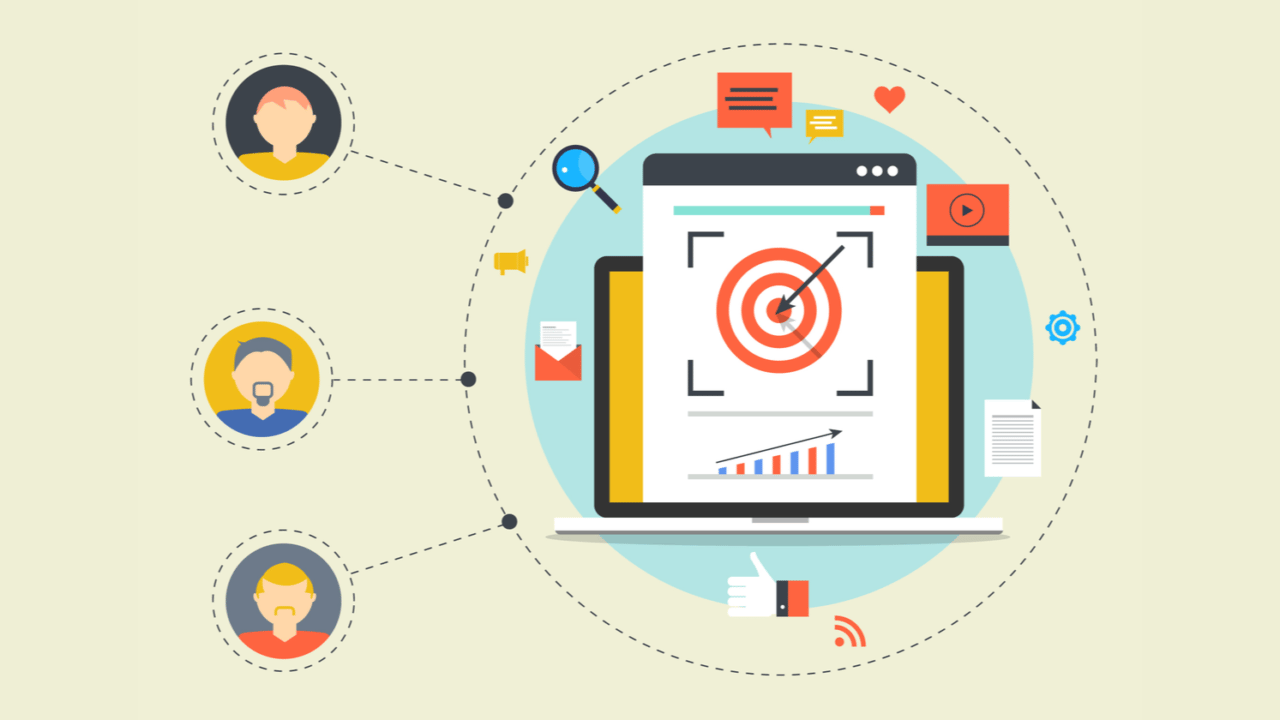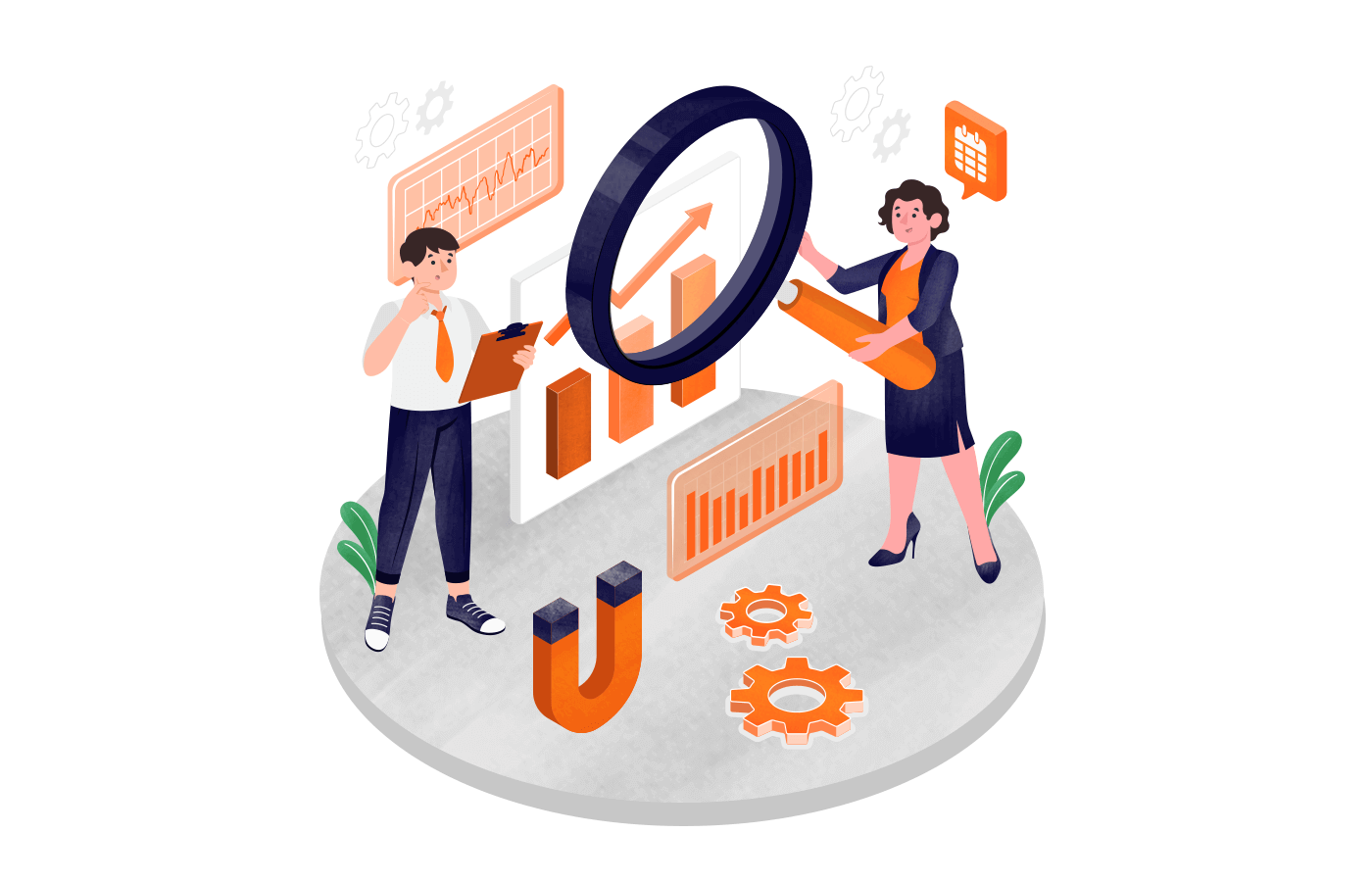By Margen Andallo on Sep 18, 2023 2:00:00 PM
What are B2B Leads?
B2B leads are the foundation upon which successful business-to-business relationships are built. Think of them as the potential clients or partners who have expressed a keen interest in your products or services. They are not just random names on a list; they are the seeds from which fruitful collaborations can grow.
In the digital realm, these leads typically take the form of contact information, such as email addresses or phone numbers. However, they represent much more than mere data. B2B leads are often individuals or organizations that have taken a deliberate action to engage with your business. This could involve signing up for a newsletter, downloading a whitepaper, or requesting a product demo. Each of these actions signifies a level of interest and indicates that the lead is potentially open to further communication.
To put it in a real-world context, picture yourself attending a networking event. You meet someone who shows genuine interest in your product or service, asks pertinent questions, and shares their business card. That business card is, in essence, a B2B lead. It signifies an initial connection and the beginning of a potential business relationship.
Understanding B2B leads is not just about collecting data; it's about recognizing the value of these connections. Every lead represents a possibility, a chance to nurture a relationship that could lead to a sale, a partnership, or a valuable referral.
The Importance of Effective Lead Generation
Effective lead generation is the lifeblood of any B2B company. It's the engine that propels your business forward, powering your sales efforts and revenue growth. But why is it so crucial?
First and foremost, it's about quantity. A steady flow of leads ensures that your sales team always has opportunities to pursue. Without leads, your sales team is like a car with an empty gas tank – it won't get far.
However, quantity alone isn't enough. The quality of your leads is equally, if not more, important. Effective lead generation is not just about filling your database with names; it's about finding leads that are genuinely interested in what you offer. These are the leads that are more likely to convert into paying customers.
Effective lead generation also helps in predictability. When you have a well-established lead generation system, you can forecast your future sales with more accuracy. This allows for better resource allocation, budget planning, and overall business strategy.
Challenges in B2B Lead Generation
While B2B lead generation is undeniably crucial, it's not without its challenges. Unlike B2C (business-to-consumer) where you can often target a broader audience, B2B marketing often involves longer sales cycles and multiple decision-makers. These complexities can make lead generation in the B2B space more intricate.
One significant challenge is targeting the right audience. In B2B, you're not selling to individual consumers but to other businesses. This means you need to identify the specific industries, roles, and organizations that are most likely to benefit from your products or services. Precision targeting is key, as your resources are better spent on leads that are more likely to convert.
Another challenge is nurturing leads over time. B2B sales cycles can be lengthy, sometimes stretching over several months or even years. During this time, you need to maintain engagement and build trust with your leads. This requires a well-thought-out lead nurturing strategy that provides valuable content and touches points at the right moments in the buyer's journey.
Why A/B Testing Matters
In the ever-evolving landscape of B2B lead generation, strategies that worked yesterday might not be as effective today. This is where A/B testing comes into play.
A/B testing, also known as split testing, is the process of comparing two versions of a webpage, email, or other marketing assets to determine which one performs better. It's like conducting experiments to see what resonates with your audience and what drives them to take the desired action, whether it's signing up for a newsletter, requesting a quote, or making a purchase.
A/B testing matters because it provides data-driven insights that can significantly impact your lead generation efforts. It takes the guesswork out of marketing. Instead of relying on gut feelings or assumptions, you rely on concrete data to make decisions.
Imagine you have a landing page for a new product, and you're not sure whether the headline or the call-to-action button color is more appealing to your audience. A/B testing allows you to create two versions of the landing page—one with the original headline and button color (A), and another with a different headline and button color (B). You then randomly show half of your website visitors version A and the other half version B. By tracking which version generates more conversions, you can confidently choose the winning option and optimize your landing page accordingly.
But A/B testing isn't just about changing button colors. It can be applied to various aspects of your lead generation strategy, from email subject lines to social media ad copy. It's a versatile tool that empowers you to make incremental improvements that can have a substantial impact on your bottom line.

Getting Started with A/B Testing
Defining A/B Testing
Before we dive into the nitty-gritty of A/B testing, let's ensure we have a crystal-clear understanding of what it entails.
A/B testing is a method of experimentation in marketing and web design. It involves creating two (or more) versions of a web page, email, or advertisement and then comparing how they perform with real users. The goal is to determine which version is more effective in achieving your specific objectives.
Imagine you're a chef experimenting with two recipes for a chocolate cake. You bake two cakes, each with a slight variation in ingredients—one with more cocoa and one with more sugar. You then ask a panel of tasters to try both cakes and vote for their favorite. The one that receives more votes is the winner, and you use that recipe for your future chocolate cakes.
A/B testing in marketing follows a similar principle, but instead of cakes, you're testing digital assets like web pages, emails, or ads, and instead of taste tests, you're analyzing user behavior.
Setting Clear Objectives
Before you embark on any A/B testing journey, it's imperative to establish clear and specific objectives. What do you hope to achieve through your testing efforts?
These objectives should be tied to your broader B2B lead generation goals. For example, you might want to increase the click-through rate (CTR) on your email campaigns, boost the conversion rate on your landing pages, or improve the engagement on your social media posts.
Setting clear objectives not only guides your testing process but also helps you measure success accurately. It's like setting a destination before embarking on a road trip; you'll know when you've arrived.
Selecting the Right Variables
A/B testing revolves around comparing two or more versions of a marketing asset, and these versions differ in some way. These differences are referred to as variables.
In A/B testing, you have a wide range of variables to choose from, depending on the asset you're testing. Here are some common variables in B2B lead generation:
-
Headlines: The text at the top of your webpage, email, or ad. This is often the first thing users see.
-
Images: The visuals you use, whether it's product images, graphics, or photos of your team.
-
Call-to-Action (CTA) Buttons: The buttons that prompt users to take action, such as "Sign Up Now" or "Request a Quote."
-
Text Content: The actual written content on your webpage, email, or ad, including the product descriptions, benefits, and features.
-
Forms: If your lead generation involves forms, you can test the length, design, and number of fields.
-
Email Subject Lines: For email campaigns, the subject line is a critical variable that can significantly impact open rates.
-
Ad Copy: If you're running paid advertising, the wording of your ads can make a huge difference.
When selecting variables to test, focus on those that are likely to have a meaningful impact on your objectives. For instance, if you're looking to increase sign-ups on your landing page, testing the CTA button color might be more relevant than changing the footer text.
Tools and Resources
A/B testing requires the right tools and resources to execute effectively. Fortunately, there are numerous tools available to simplify the process. Here are some key elements to consider:
-
A/B Testing Software: Invest in A/B testing software that allows you to create, manage, and analyze experiments. Popular options include Optimizely, VWO (Visual Website Optimizer), and Google Optimize.
-
Analytics Tools: Ensure you have robust analytics tools in place to track user behavior and measure the success of your tests. Google Analytics is a widely used option for this purpose.
-
Creative Resources: Depending on the variables you're testing, you may need access to graphic designers, copywriters, or developers to create and implement changes.
-
Test Audience: Define who your test audience is and how you'll split them into groups for testing. Make sure your audience size is statistically significant to draw valid conclusions.

Crafting High-Converting Landing Pages
Design and Layout
The design and layout of your landing pages play a pivotal role in converting visitors into B2B leads. Here's how A/B testing can help you find the winning formula:
-
Color Schemes: Experiment with different color combinations for your page elements, such as headers, buttons, and background. Sometimes, a subtle color change can significantly impact user engagement.
-
Layout Variations: Test different layouts to see which one guides users toward your desired action more effectively. For instance, try variations with the form at the top versus the form at the bottom of the page.
-
Images and Graphics: Assess the impact of different images or graphics on your landing page. A/B test product images, hero images, or infographics to see what resonates best with your audience.
Copywriting and Content
Words matter. The content on your landing page should be compelling and persuasive. A/B testing can help refine your copy and content strategy:
-
Headlines: Experiment with different headline styles, from benefit-driven to curiosity-evoking, to determine which captures your audience's attention and encourages them to read further.
-
Product Descriptions: Test different ways of describing your product or service's features and benefits. Highlight different aspects to see what resonates most with your audience.
-
Call-to-Action (CTA) Text: The wording on your CTA buttons can make a substantial difference. Try variations like "Get Started Now" versus "Unlock My Benefits" to find the most effective phrasing.
Forms and CTAs
Forms are often the gateway to capturing B2B leads. A/B testing can help you optimize your forms and CTAs for maximum conversions:
-
Form Length: Test different form lengths. Sometimes, shorter forms lead to more conversions, but longer forms can provide higher-quality leads with more information.
-
Field Types: Experiment with the types of fields in your forms. For instance, try drop-down menus versus open text fields to see which users prefer.
-
CTA Placement: Test the placement of your CTA buttons. Should they be at the top, middle, or bottom of the page? Does a sticky CTA button improve conversion rates?
Mobile Optimization
With a growing number of users accessing the internet on mobile devices, it's essential to ensure your landing pages are mobile-friendly. A/B testing can help you find the optimal mobile experience:
-
Responsive Design: Test how your landing page adapts to various screen sizes and orientations. Ensure that it looks and functions well on both smartphones and tablets.
-
Load Times: Experiment with different image compressions and load times to find the right balance between a visually appealing page and speedy performance.
-
Mobile CTAs: Test the size and placement of CTA buttons on mobile devices. Ensure they are easily tappable and stand out on smaller screens.
By optimizing your landing pages through A/B testing, you can fine-tune every element to create an experience that resonates with your target audience and maximizes lead generation.

Optimizing Email Marketing Campaigns
Subject Lines and Preview Text
In the world of email marketing, the subject line is your first impression. A/B testing can help you perfect it:
-
Length and Clarity: Test subject lines of varying lengths, from short and snappy to longer and more descriptive. Determine which style leads to higher open rates.
-
Personalization: Experiment with personalizing subject lines with the recipient's name or other relevant information. Does personalization lead to increased engagement?
-
Emojis: Assess the impact of emojis in subject lines. Sometimes, a well-placed emoji can make your email stand out in a crowded inbox.
-
Preview Text: Don't forget about the preview text, which often accompanies the subject line. Test different preview text variations to encourage users to open your emails.
Email Content
The content of your emails, from the opening paragraph to the call-to-action, can significantly impact click-through and conversion rates:
-
Content Length: Experiment with the length of your emails. Some audiences prefer concise messages, while others engage more with longer, informative content.
-
Visual Elements: Test the inclusion of images, videos, or infographics in your emails. Visual content can sometimes boost engagement.
-
Writing Style: Try different writing styles, from formal to conversational, to determine what resonates with your audience.
-
CTA Placement: Test where you place your CTA within the email. Should it be at the beginning, middle, or end? Does it work better as a button or a text link?
Timing and Frequency
When you send your emails and how often you send them can impact open and click-through rates:
-
Send Times: Experiment with different days and times for sending emails. Does your audience respond better to morning emails or afternoon emails? What about weekends?
-
Frequency: Test the frequency of your email campaigns. Is a weekly newsletter more effective, or do bi-weekly updates yield better results?
Personalization
Personalization is a powerful tool in email marketing, but it's not one-size-fits-all. A/B testing can help you find the right level of personalization:
-
Personalized Recommendations: If you're an e-commerce business, test the impact of personalized product recommendations based on the recipient's browsing and purchase history.
-
Dynamic Content: Experiment with dynamic content that adapts based on user behavior or preferences.
By fine-tuning your email marketing campaigns through A/B testing, you can increase open rates, click-through rates, and ultimately, the number of leads generated through this channel.

Maximizing the Power of Social Media
Platform Selection
Not all social media platforms are created equal, and not all are suitable for B2B lead generation. A/B testing can help you determine where to focus your efforts:
-
Platform Effectiveness: Experiment with different social media platforms to see which one delivers the best results for your B2B lead generation goals.
-
Content Types: Test various types of content, such as articles, infographics, videos, and webinars, to see what resonates with your target audience on each platform.
Content Types
Social media users consume different types of content. A/B testing can reveal which content types generate the most engagement and leads:
-
Educational Content: Experiment with sharing educational content, such as industry insights, how-to guides, and case studies, to position your brand as an authority.
-
Interactive Content: Test the impact of interactive content like polls, quizzes, and live streams. Engagement can translate into lead generation opportunities.
-
Visual Content: Assess the effectiveness of visual content, such as eye-catching images and infographics, in capturing your audience's attention.
Posting Schedule
The timing of your social media posts can significantly impact their reach and engagement. A/B testing can help you pinpoint the ideal posting schedule:
-
Day and Time: Experiment with different days of the week and times of the day to determine when your audience is most active and receptive.
-
Consistency: Test whether a consistent posting schedule yields better results than sporadic posting.
Engagement Metrics
While likes and shares are essential, the ultimate goal of social media is to convert engagement into leads. A/B testing can help you optimize your social media strategy for lead generation:
-
CTA Variations: Test different call-to-action phrases and placements in your social media posts. Encourage users to take a specific action that leads them to your landing page.
-
Lead Magnets: Experiment with various lead magnets, such as ebooks, webinars, or free trials, to see which ones resonate best with your audience.
By harnessing the power of A/B testing on social media, you can fine-tune your content strategy, posting schedule, and calls-to-action to drive more B2B leads through this vital channel.

Analyzing and Implementing Results
Data Collection
A/B testing generates a wealth of data, from click-through rates to conversion rates. Effective data collection is crucial for deriving meaningful insights:
-
Data Tracking: Ensure that you have robust tracking in place to monitor user behavior across your tested assets.
-
Data Integrity: Keep your data clean and accurate. Ensure that you're tracking real user interactions and not bot activity.
Interpreting A/B Test Results
Analyzing A/B test results requires a blend of statistical knowledge and practical insight:
-
Statistical Significance: Determine the statistical significance of your results to ensure they're not due to random chance.
-
Meaningful Patterns: Look for meaningful patterns in the data. What do the results tell you about user preferences and behavior?
-
Segmentation: Consider segmenting your audience to identify specific preferences among different customer groups.
Implementing Changes
Once you've interpreted your A/B test results, it's time to put your findings into action:
-
Winner Implementation: Implement the changes indicated by the winning variant of your A/B test.
-
Iterative Testing: Consider conducting further tests to refine your marketing assets continually.
-
Documentation: Keep detailed records of your A/B tests and their outcomes. This documentation can serve as a valuable resource for future campaigns.
Continuous Testing
The digital landscape is ever-evolving. What works today may not work tomorrow. Embrace a culture of continuous testing to stay ahead:
-
Regular Reviews: Schedule regular reviews of your A/B testing strategy to ensure it aligns with changing customer preferences and industry trends.
-
Competitor Analysis: Keep an eye on what your competitors are doing and adapt your strategies accordingly.
-
Innovation: Don't be afraid to innovate. Test new ideas and approaches to see if they resonate with your audience.
By continually analyzing and implementing A/B test results, you can stay agile and adaptive in your B2B lead generation efforts.

The ROI of A/B Testing in B2B Lead Generation
Cost-Efficiency
A/B testing may require an initial investment in tools and resources, but the returns can be substantial:
-
Reduced Wastage: By optimizing your marketing assets, you reduce wastage on ineffective strategies and reach your target audience more efficiently.
-
Higher ROI: The increased conversion rates resulting from A/B testing often translate into a higher return on investment.
Improved Conversion Rates
One of the most significant benefits of A/B testing is its potential to boost conversion rates:
-
Incremental Improvements: A/B testing allows you to make incremental improvements to your marketing assets over time, compounding the impact on conversion rates.
-
Data-Driven Decisions: Rather than relying on gut feelings, you make decisions based on concrete data, leading to more effective strategies.
Enhanced Customer Insights
A/B testing provides valuable insights into your customers' preferences and behaviors:
-
Customer-Centric Approach: Armed with data on what works best for your audience, you can tailor your marketing efforts to be more customer-centric.
-
Refined Targeting: You can fine-tune your targeting based on the preferences demonstrated in your A/B tests, reaching the right people with the right message.
Competitive Advantage
In the competitive B2B landscape, staying ahead is crucial:
-
Differentiation: A/B testing helps you differentiate your brand and offerings, giving you an edge in the market.
-
Adaptability: The ability to adapt and refine your strategies quickly based on A/B test results allows you to stay ahead of competitors.
By optimizing your B2B lead generation efforts through A/B testing, you not only increase your chances of success but also build a sustainable competitive advantage in your industry.
In conclusion, A/B testing is not just a technique; it's a philosophy of continuous improvement. It empowers you to make data-driven decisions, refine your strategies, and ultimately drive more B2B leads. By understanding the nuances of A/B testing and applying it strategically, you can unlock the full potential of your lead generation efforts.





comments